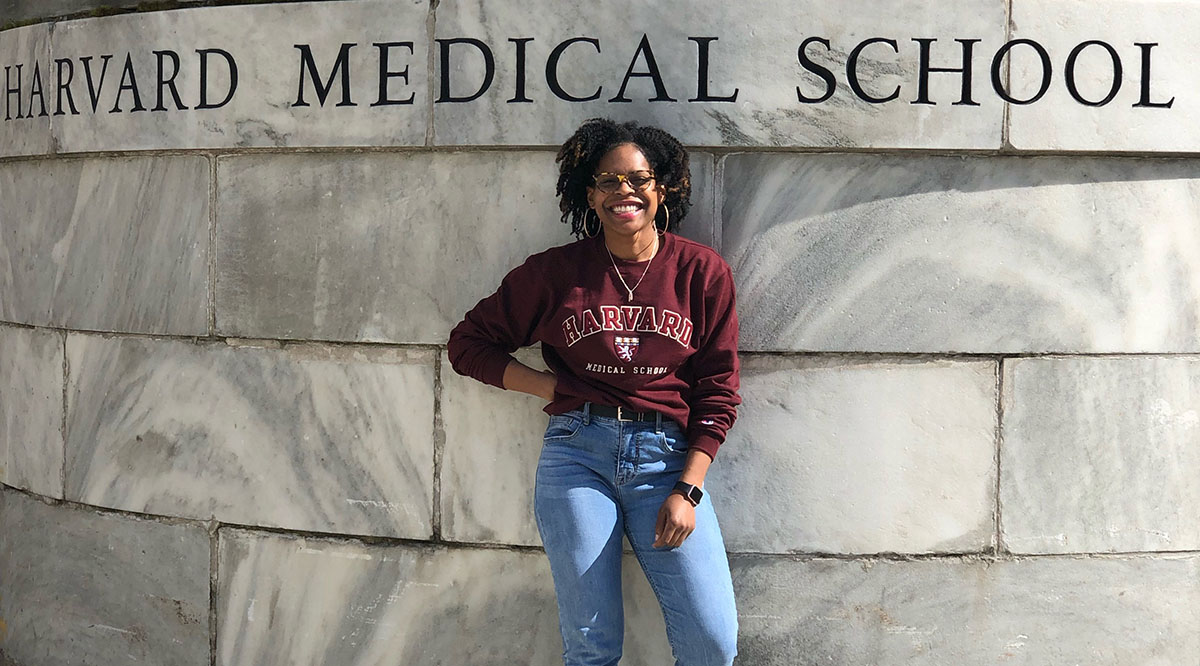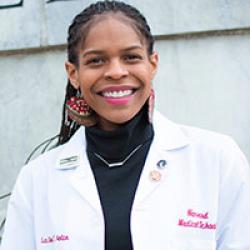
Editor’s note: The opinions expressed by the author do not necessarily reflect the views of the AAMC or its members.
While COVID-19 has undoubtedly changed the landscape of medical education, it has also had an impact on the thousands of students who are getting ready to begin their journey to becoming physicians. By May 1, almost 30,000 medical students who were accepted to one or more medical schools must decide where they want to spend the next four years. In ordinary times, admitted students would attend Revisit and Second Look events at the schools to which they had been accepted. There, they would have an opportunity to meet their prospective classmates and engage with faculty, all while imagining themselves as students at those institutions.
These aren’t ordinary times. In the era of social distancing, many Revisit or Second Look events have been canceled or transformed into virtual sessions. This sudden change has left many admitted students feeling unsure about how to make what for many may be the biggest decision of their lives.
Just one year ago, I was in the same shoes as many of these students. While I felt great privilege to have options on where to attend school, I was also overwhelmed with anxiety, fearing I would make the “wrong” decision. As a first-generation medical student, the advice of my family and friends was limited. This led me to venture to sites like Student Doctor Network and Reddit, in hopes that the advice of strangers would lead me to a final decision. Not surprisingly, that only made me more anxious. It wasn’t until I attended Revisit and Second Look events at the schools that I was able to confidently make my decision.
In the era of social distancing, many Revisit or Second Look events have been canceled or transformed into virtual sessions. This sudden change has left many admitted students feeling unsure about how to make what for many may be the biggest decision of their lives.
As a student of color, Revisit events were especially key for me because they reassured me that the school I chose would have a support system on which I could rely, as well as a community of like-minded students who would understand my lived experiences.
Today, as a first-year student and student council president at Harvard Medical School, I have had the opportunity to speak with various students across the country about their medical school choices. Here is my advice for students making this decision during such challenging circumstances:
1. Reach out to current students.
Reaching out to medical students can feel daunting. As a premed student, I remember feeling like I was a burden because I felt I was taking away from medical students’ valuable study time. While it is true that medical students are busy, we want to talk to you! We are your biggest asset during this time, and we value your concerns, questions, and insights because we see you as part of our community.
We also understand choosing where to go to medical school can be both an exciting and a scary process. Many of us have been in the same situation and are happy to help you work through some of the strategies we used when we were in your shoes. Some that I personally used were:
- Talking to medical students who also had to choose between similar options. (If you don’t have a contact at a certain medical school, medical students are often more than happy to connect you with a friend at another institution.)
- Revisiting notes I took about first impressions after my interview.
- Creating a pros and cons list for each of the schools and ranking them based on priorities like financial aid, special programs, location, etc.
2. Reach out to the financial aid office.
The cost of a medical education is daunting. Therefore, financial aid is often a major determinant of where a student may decide to go to medical school. As a premedical student coming from a single-parent home, this was also a major concern for me. One of the things I found most helpful during this time was reaching out to the financial aid office at schools to better understand their policies for matching need-based and merit aid offers from other institutions. Many schools have financial aid advisors they will assign to admitted students who are available to answer your questions via email or by phone. If you feel your dream school isn’t giving you full need-based financial support, it is important to express this to the institution’s financial aid and admissions office. It can feel uncomfortable asking for more financial aid, but if your financial and personal wellness depend on it, it is very appropriate to raise this concern.
3. Take note of the effort schools have made to reach out to you.
Many schools have had to adjust their original in-person Revisit and Second Look plans to include online Zoom sessions and modules. As a student on the Revisit Planning Committee at Harvard Medical School, I can say this was no easy task. It took great coordination from faculty, staff, students, IT personnel, and so many more to make this happen.
As medical schools across the country scramble to make their best impression on students, it is important to remember not every school will have access to the same technology and support as others. What every school should have, however, is a community of students, faculty, and staff who are committed to answering your questions and ensuring you feel supported during this time. Take note of every school’s efforts to reach out to you. Whether it’s a full-blown virtual Revisit or a letter of congratulations from a current student, these small gestures are big representations of how a medical school might value its students.
4. Interact with your prospective classmates.
Revisit and Second Look events are great opportunities to get a better feel for the culture of an institution, but most importantly, they are opportunities to see how you might click with your future classmates. COVID-19 has made it impossible for prospective students to physically get a “vibe” from their future colleagues but there are virtual alternatives here too:
- Administrators could schedule Zoom “happy hours” or “dinners” for admitted students to come together for casual conversation over the online platform.
- Students should create a class GroupMe for the admitted students in their class so students can field their questions and concerns in a safe space.
Finally, to all the admitted students out there: Despite our current circumstances, this should be a congratulatory moment that celebrates the culmination of all the hard work that got you to this point in your career. Just as we are united in our efforts to quell the spread of COVID-19, we are also united in our efforts to help you make the best decision for you as you begin your medical school journey. Lean on your community and know we will support you every step of the way.
